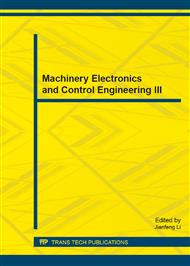p.984
p.989
p.993
p.997
p.1001
p.1005
p.1010
p.1016
p.1020
An Energy-Saving Routing Algorithm for Opportunistic Networks Based on Asynchronous Sleep Approach
Abstract:
The sparse and mobility of nodes in opportunistic networks will cause network topology often fracturing, resulting that a large number of isolated nodes appear in opportunistic networks. These isolated nodes will waste much energy at idle listening stage, so this paper proposes an Efficient Routing algorithm for opportunistic networks based on Asynchronous Sleep Approach-ERASA. ERASA achieves the goal of saving energy by making the isolated nodes enter the low power consumption dormancy state. Then they will be timely awaken when there are other nodes entering into their communication range. Compared with the classical Epidemic routing algorithm, the several aspects performance of ERASA algorithm are improved such as network lifetime.
Info:
Periodical:
Pages:
1001-1004
Citation:
Online since:
December 2013
Authors:
Keywords:
Price:
Сopyright:
© 2014 Trans Tech Publications Ltd. All Rights Reserved
Share:
Citation:


